8i | 9i | 10g | 11g | 12c | 13c | 18c | 19c | 21c | 23c | Misc | PL/SQL | SQL | RAC | WebLogic | Linux
Home » Articles » Linux » Here
Fedora 17 (F17) Installation
This article provides a pictorial guide for performing a basic installation of Fedora 17 (F17).
Basic Installation
Boot from the DVD.
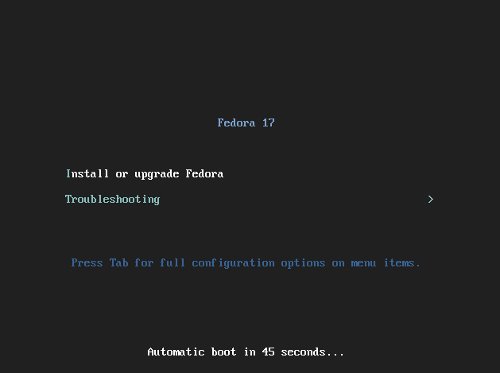
Select the appropriate language, then click the "Next" button.
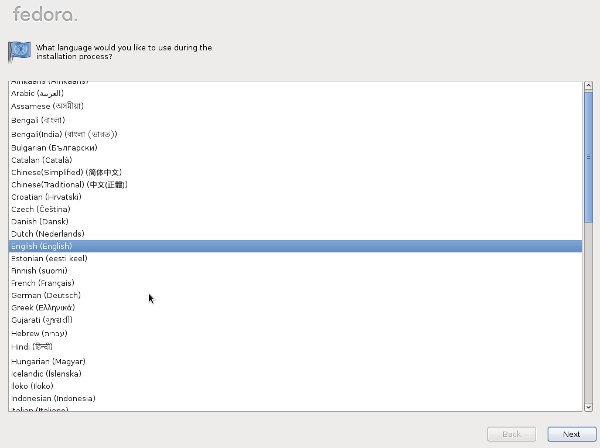
Select the appropriate keyboard layout, then click the "Next" button.
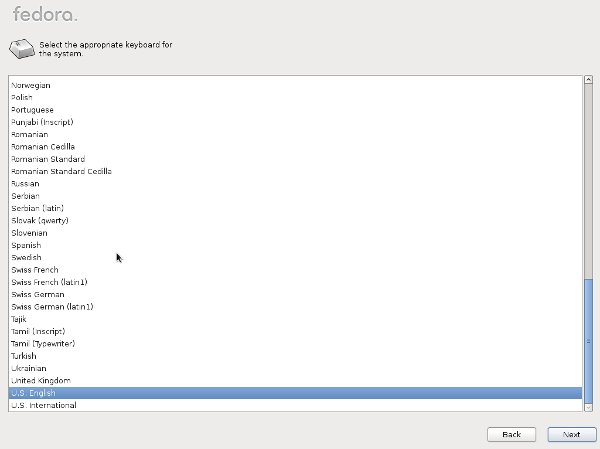
Choose the appropriate storage option, then click the "Next" button.
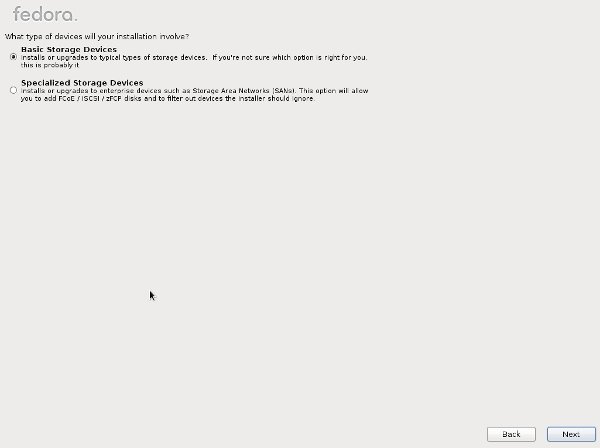
When prompted, click the "Yes, discard any data" button.
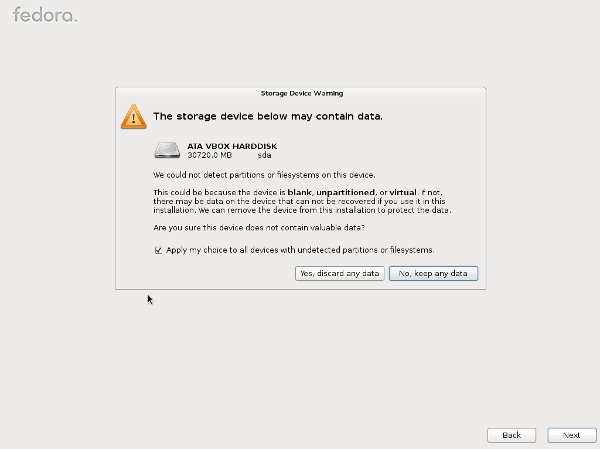
Enter a fully qualified hostname, then click the "Configure Network" button.
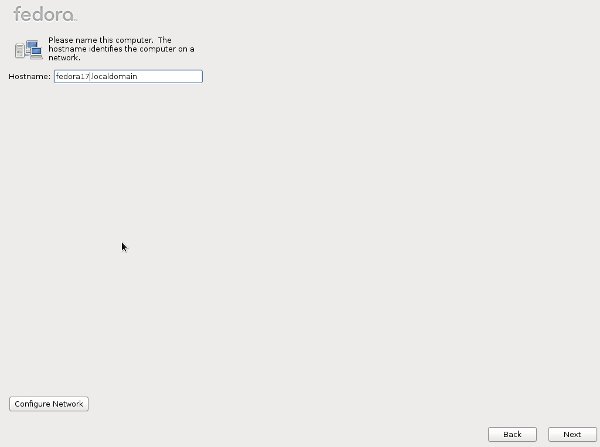
Highlight the network adapter, then click the "Edit" button.
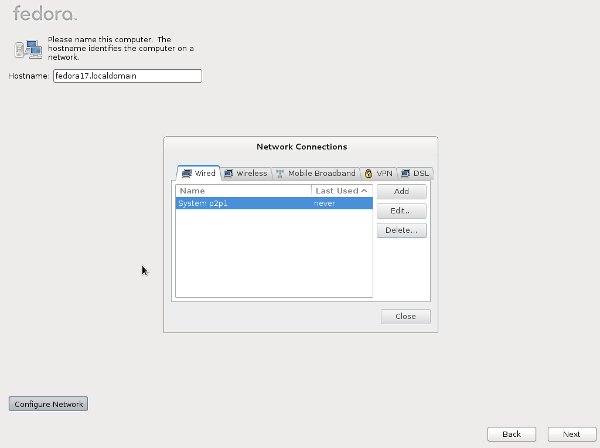
Tick the "Connect automatically" option, then click the "IPv4 Settings" tab. Select the desired configuration method and enter the required information. When complete, click the "Save..." button, followed by the "Close" button and the "Next" button on the previous two screens.
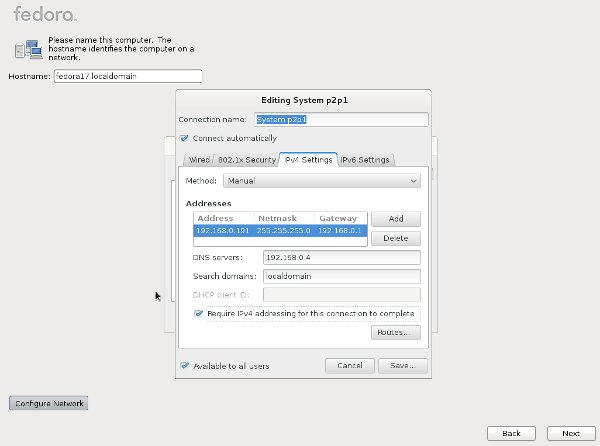
Select the appropriate timezone by clicking on the nearest city on the map, then click the "Next" button.
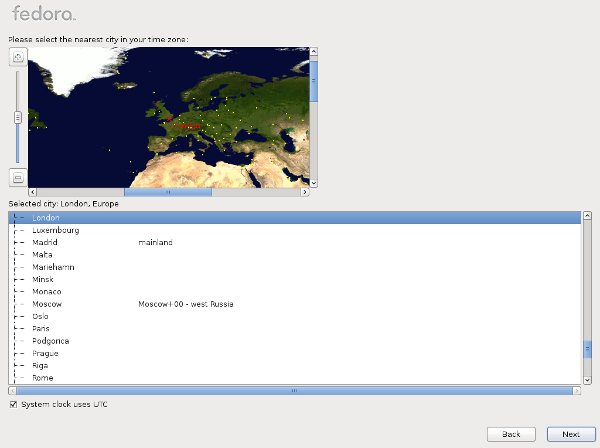
Enter the root password, then click the "Next" button.
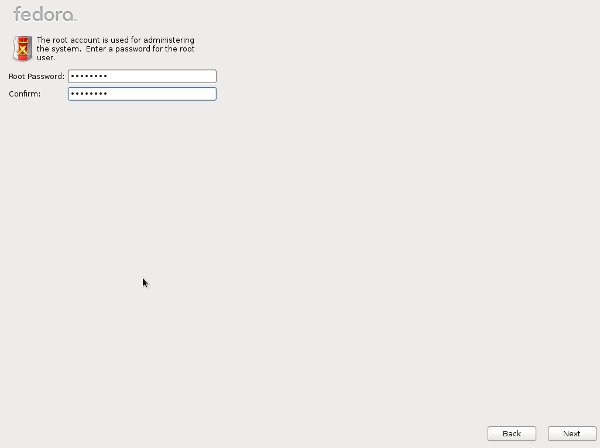
Select the "Use All Space" option, uncheck the "Encrypt system" option and check the "Review and modify partitioning layout" option, then click the "Next" button.
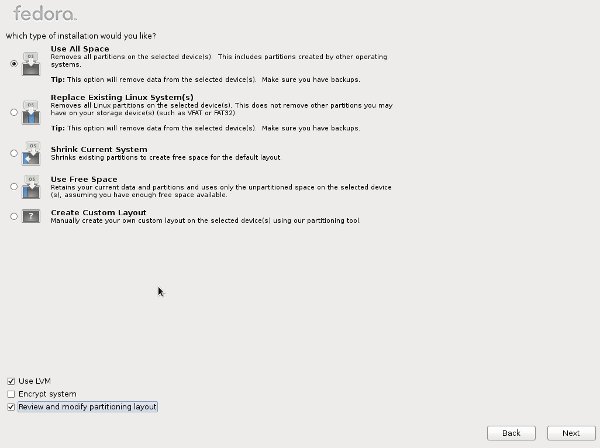
The current partitioning layout is presented. If the OS is to be used for an Oracle installation, make sure the swap partition is at least 2G (2048M) in size. Once you are happy with the partition structure, click the "Next" button followed by the "Format" and "Write changes to disk" button.
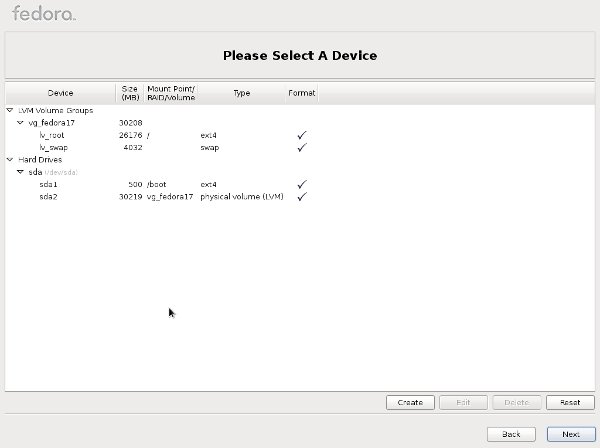
Accept the default boot loader settings by clicking the "Next" button.
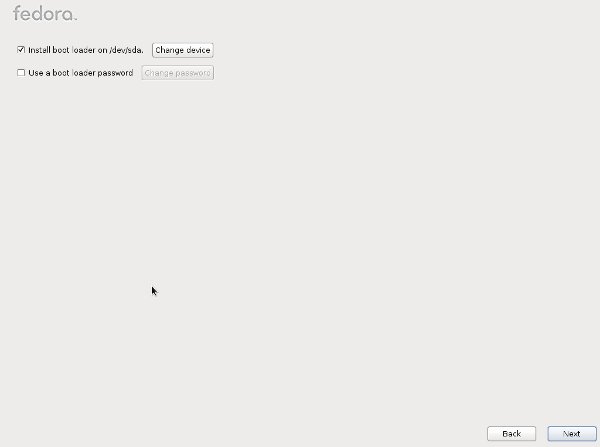
Select the installation type to install and check all three additional repositories along with the "Customize Now" option. Click the "Next" button.
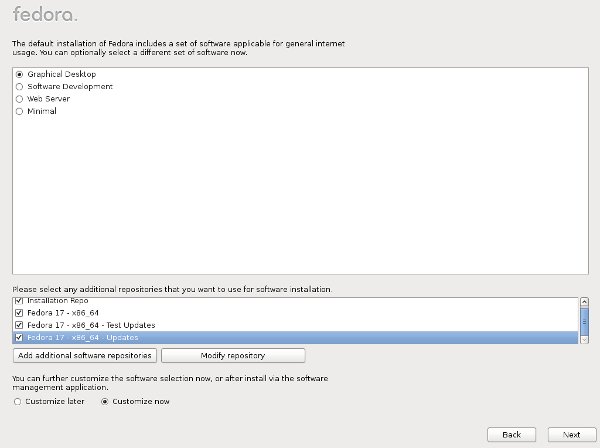
Select the appropriate package groups and optional packages for your installation and click the "Next" button.
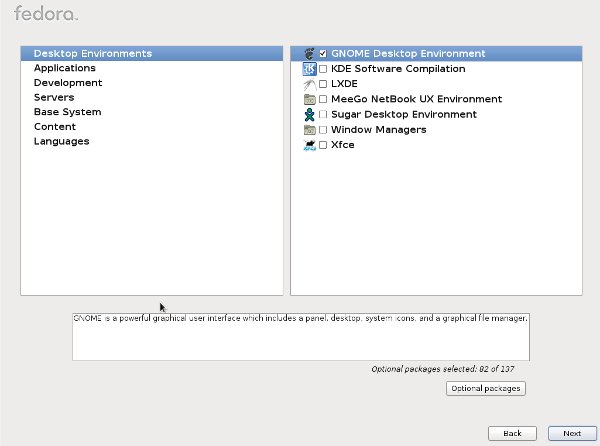
Wait while the installation completes.
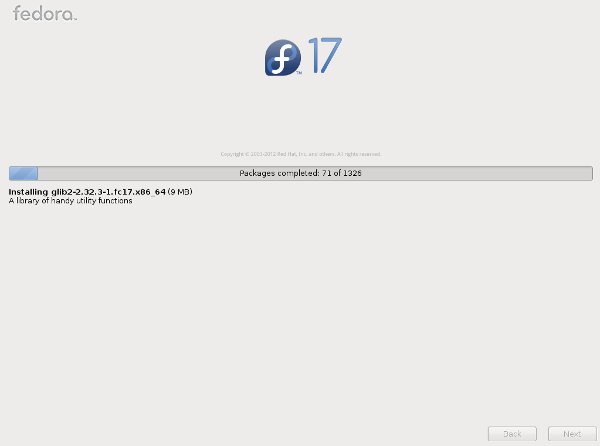
When the installation is complete, Click the "Reboot" button.
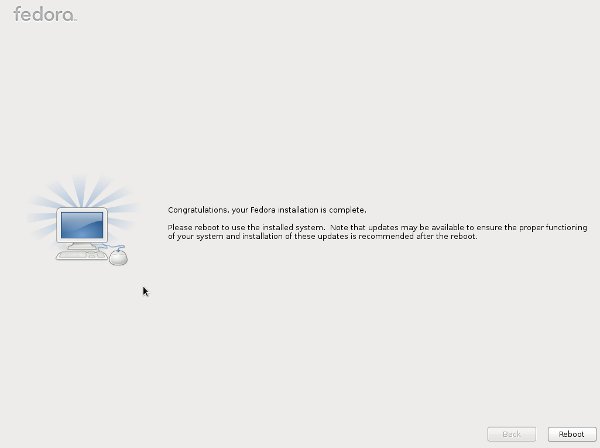
When the machine has restarted, click the "Forward" button on the welcome screen.
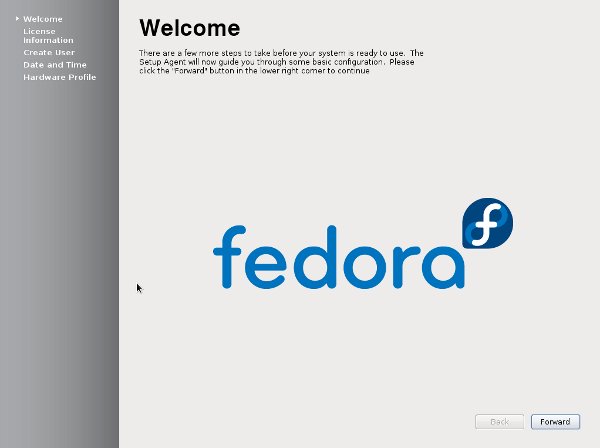
Accept the license agreement by clicking the "Forward" button.
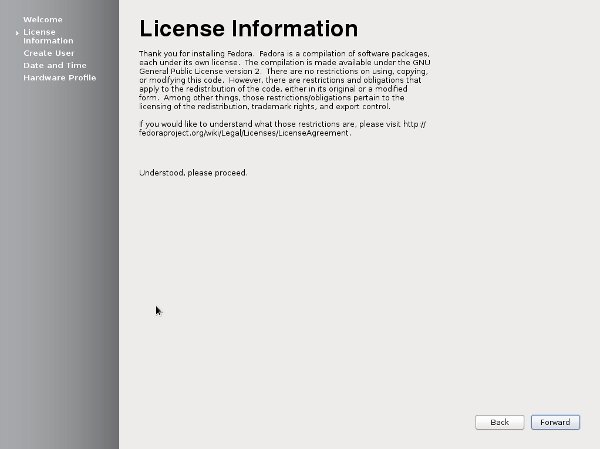
Enter login user details, then click the "Forward" button.
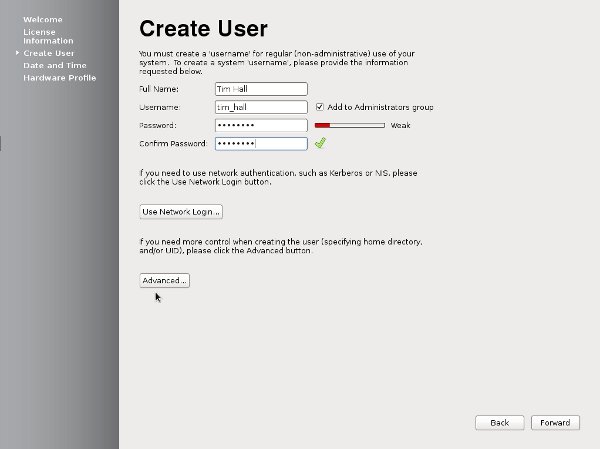
Set the appropriate date-time information, then click the "Forward" button.

Decide if you want to send a hardware profile to the Fedora project, then click the "Finish" button.
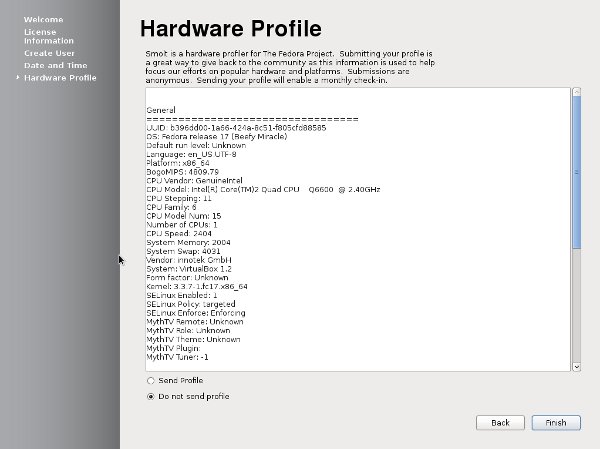
Click the username you defined previously.
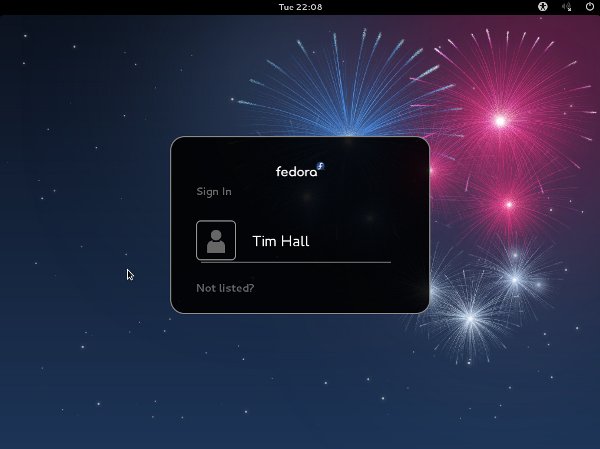
Enter the password and click the "Log In" button.
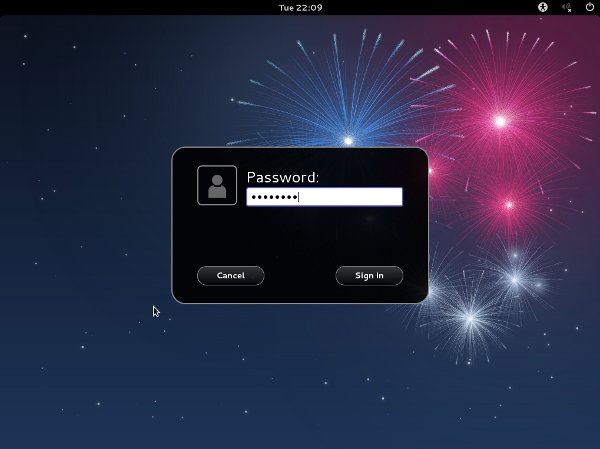
After you've logged in, you are presented with either the GNOME 3 desktop, or the fallback desktop if your video hardware is not capable of displaying the default desktop.
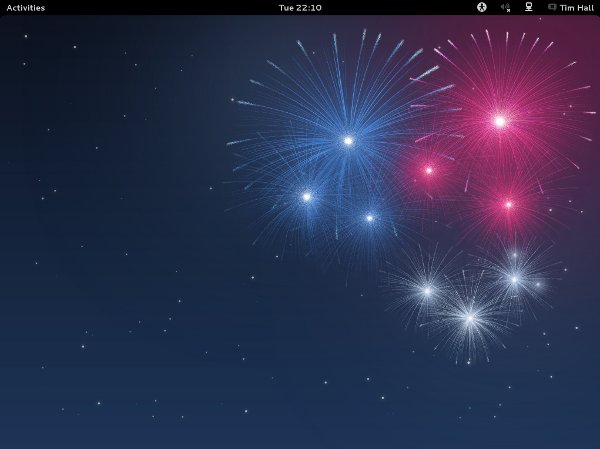
Network Configuration
If you have followed the previous installation, the following instructions are unnecessary as the information used during connection to the repositories has already been entered here for you.
If you are using DHCP to configure your network settings, then ignore the following network configuration screens, otherwise click the "Activities > Applications > System Tools > System Settings > Network" menu option. You are then presented with the "Network" dialog. Highlight "Wired", flick the switch to "ON" and click the "Options" button.
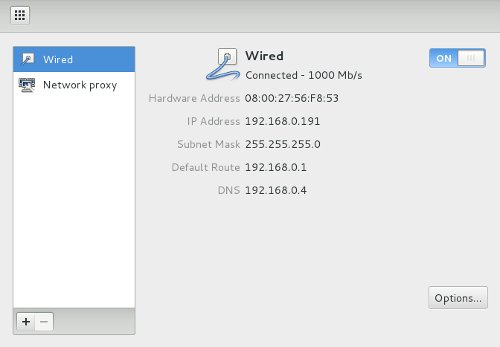
Tick the "Connect automatically" option and click the "IPv4 Settings" tab. Select the "Manual" method and enter the appropriate IP address and subnet mask, default gateway and primary DNS, then click the "Save..." button.
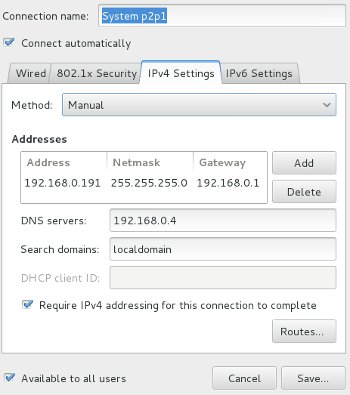
- Close the "Network" dialog.
Customizing Software
You can customize the installed packages using the "Add/Remove Software" dialog, started using the "Activities > Applications > System Tools > Add/Remove Software" menu option.
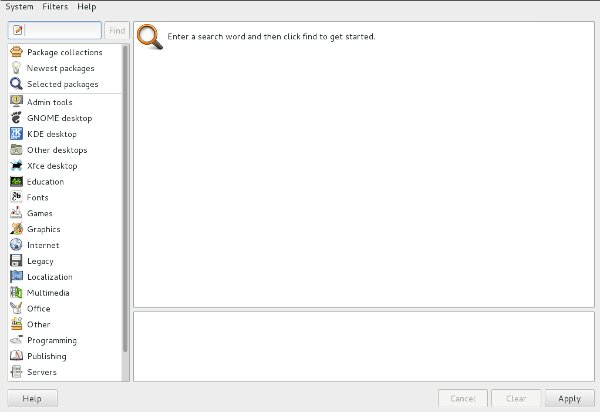
SELinux
If the OS is to be used for an Oracle installation, it is easier if Secure Linux (SELinux) is disabled. To do this edit the "/etc/selinux/config" file, making sure the SELINUX flag is set as follows.
SELINUX=disabled
If SELinux is disabled after installation, the server will need a reboot for the change to take effect.
Firewall
If the OS is to be used for an Oracle installation, it is easier if the firewall is disabled. To do this select the "Activities > Applications > Other > Firewall" menu option. On the resulting dialog, click the "Disable" button, then the "Apply" button on the toolbar.
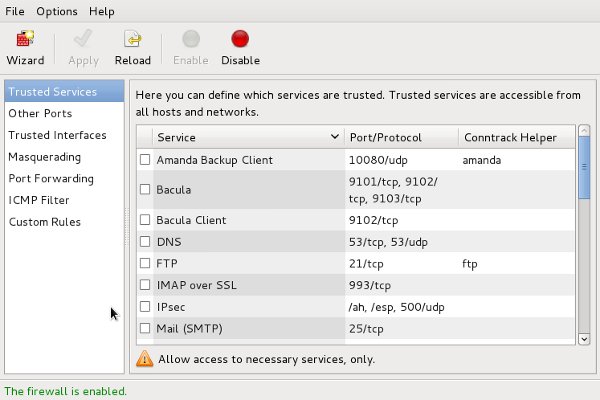
Click the "Yes" button on the resulting dialog.
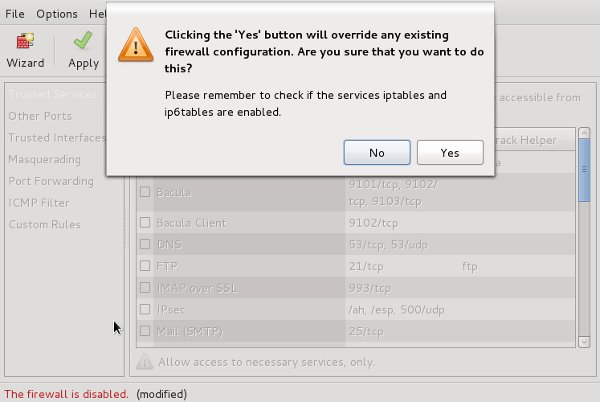
- Select the "File > Quit" menu option to exit the dialog.
Make sure the "iptables" and "ip6tables" service are turned off using the following commands.
# systemctl stop iptables.service # systemctl disable iptables.service # systemctl stop ip6tables.service # systemctl disable ip6tables.service
SSH
Make sure the SSH daemon is started using the following commands.
# systemctl start sshd.service # systemctl enable sshd.service
For more information see:
Hope this helps. Regards Tim...